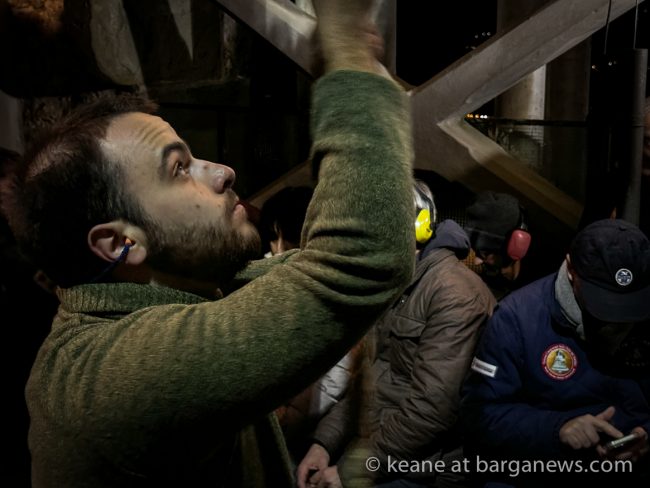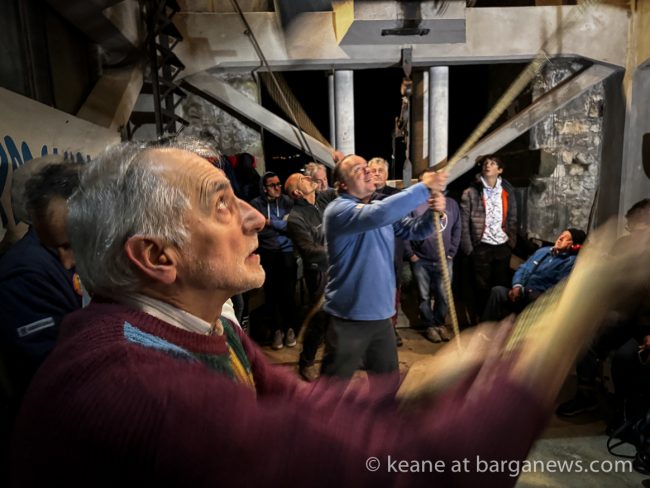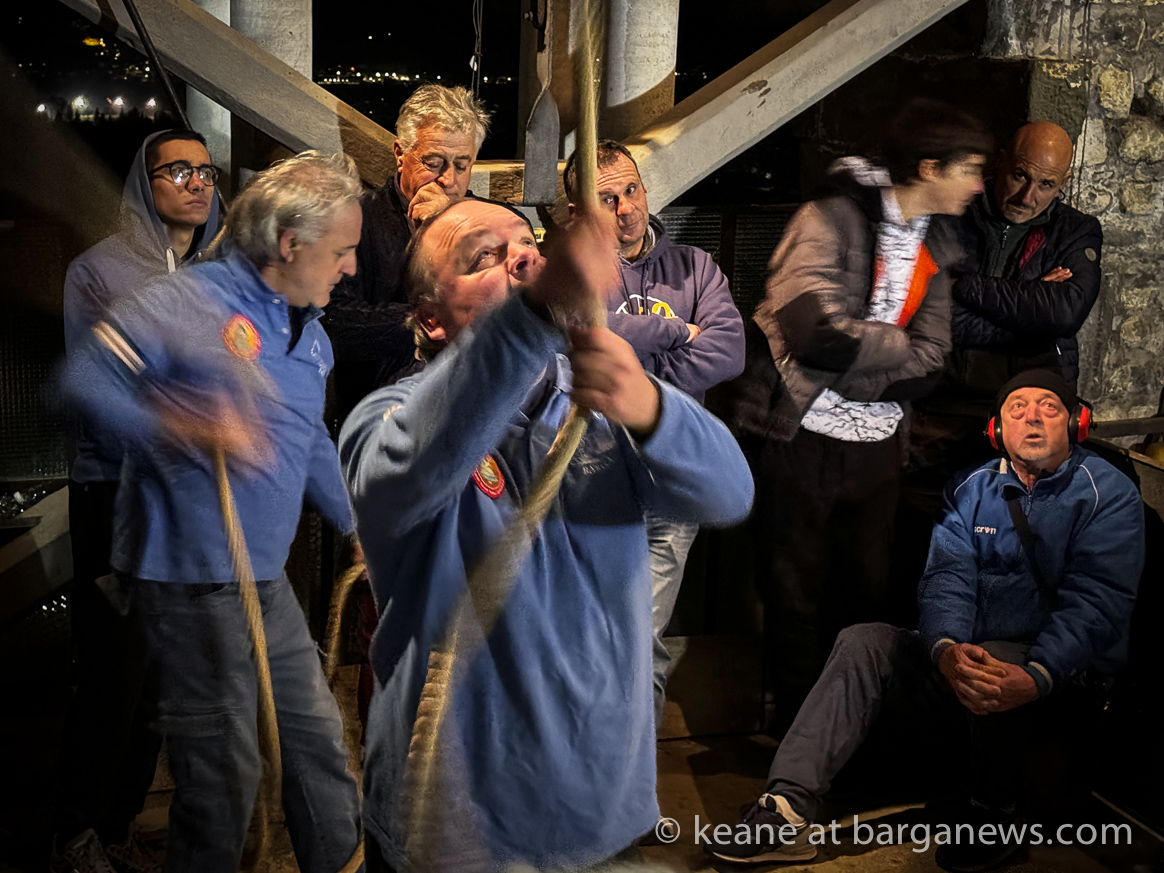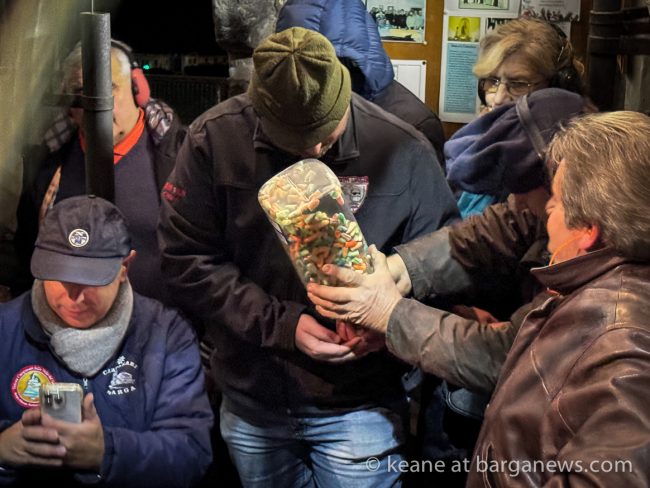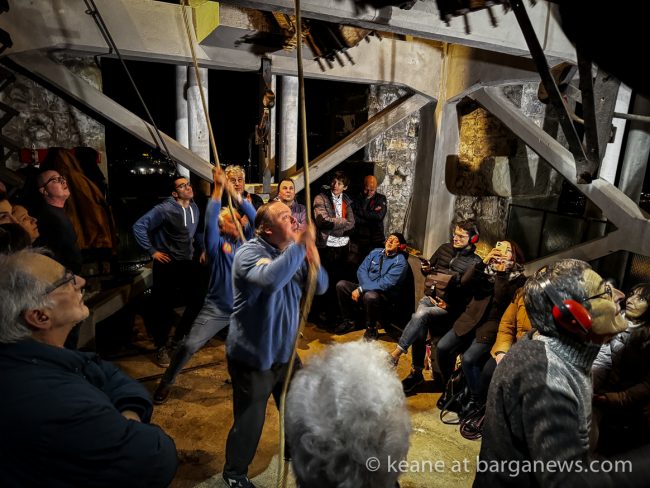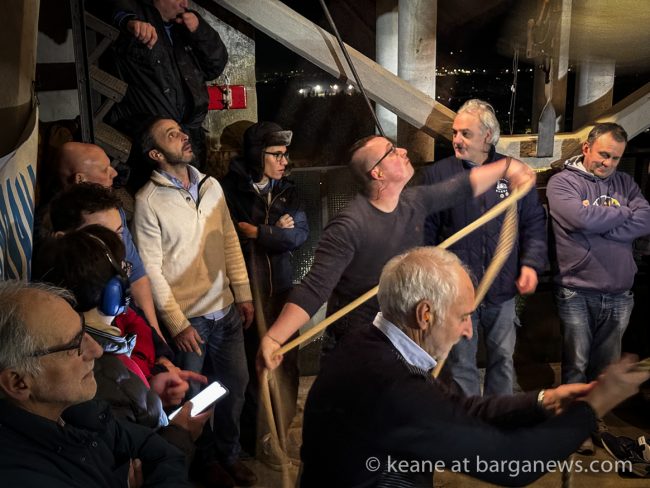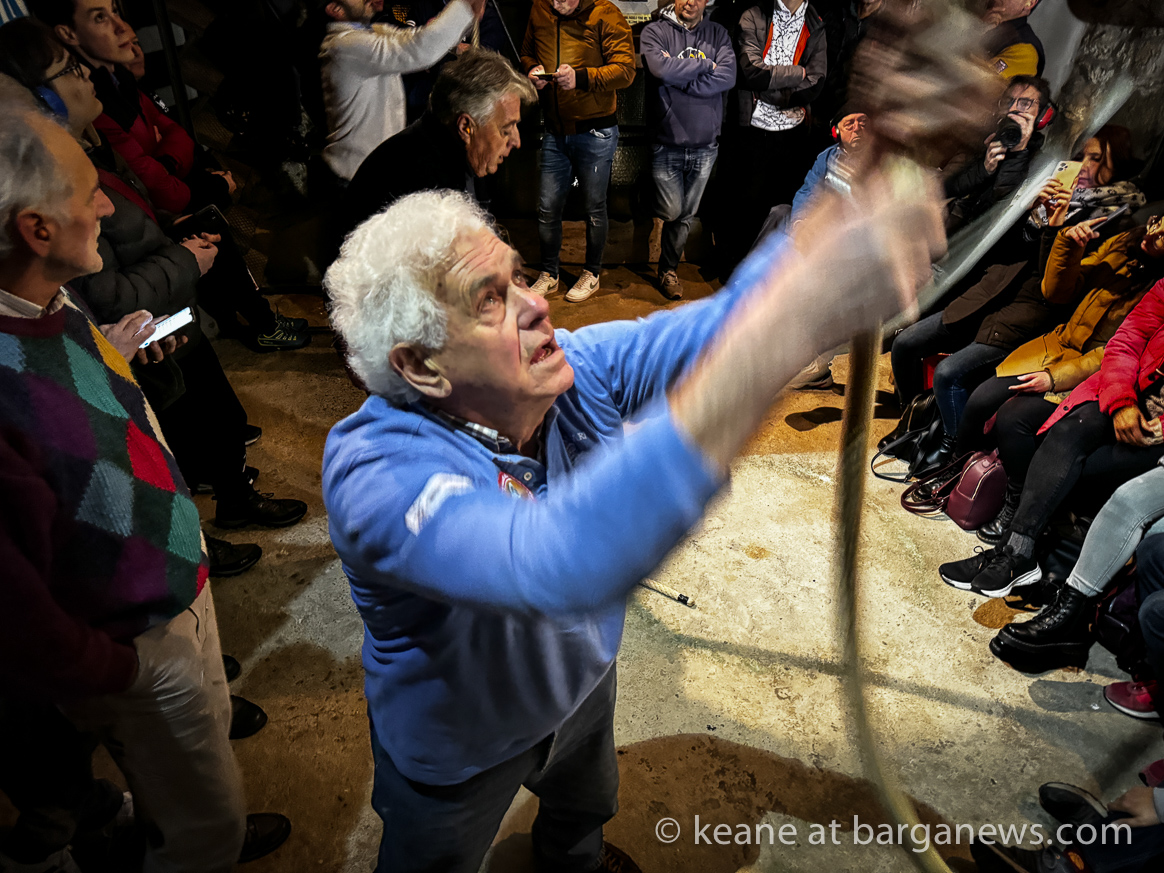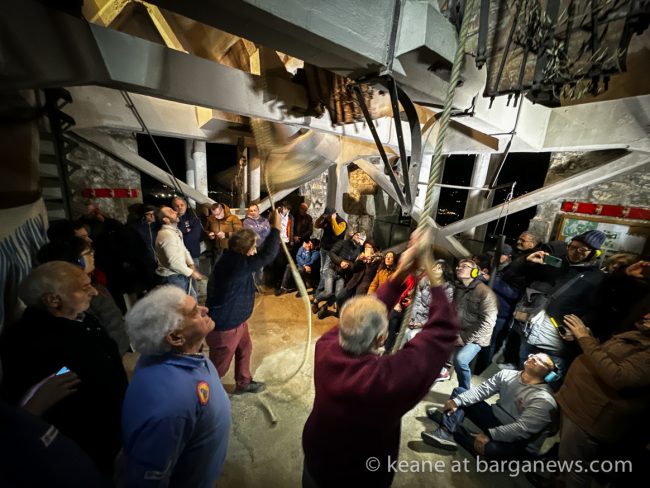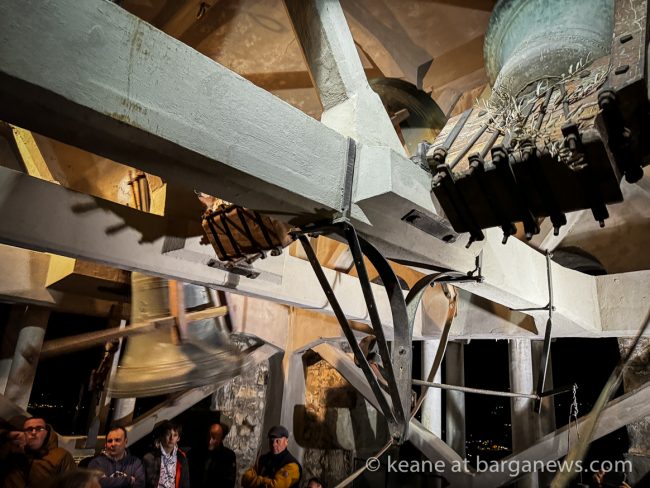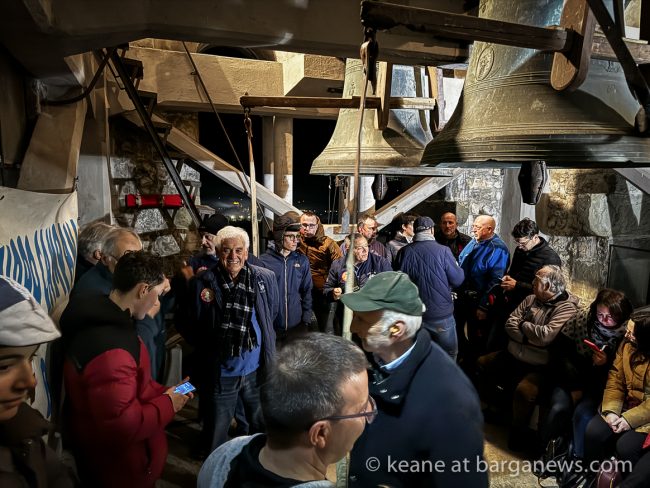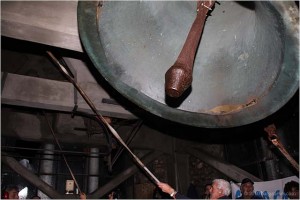 The traditional religious festival of the Immaculate Conception, held every year on the eighth of December would not be complete in Barga without the sound of the bells in the Duomo ringing out over the city for one solid hour – the so called “Doppio dell’Immacolata” and last night was no exception. From nine o’clock until the stroke of 10 o’clock the three huge bells at the top of the Duomo tower were kept in motion by a team of bell ringers – the Campanari of Barga.
The traditional religious festival of the Immaculate Conception, held every year on the eighth of December would not be complete in Barga without the sound of the bells in the Duomo ringing out over the city for one solid hour – the so called “Doppio dell’Immacolata” and last night was no exception. From nine o’clock until the stroke of 10 o’clock the three huge bells at the top of the Duomo tower were kept in motion by a team of bell ringers – the Campanari of Barga.
A feast called the Conception of Mary arose in the Eastern Church in the seventh century (prior to the Great Schism of 1054). It looked to the West in the eighth century. In the eighth century it became a feast of the Roman Catholic Church. It is the only one of Mary’s feasts that came to the Western Church not by way of Rome, but instead spread from the Byzantine area to Naples, and then to Normandy during their period of dominance over southern Italy. From there it spread into England, France, Germany, and eventually Rome.
Prior to Pope Pius IX’s definition of the Immaculate Conception as Church dogma in 1854, most missals referred to it as the Feast of the Conception of the Blessed Virgin Mary. The festal texts of this period focused more on the action of her conception than on the theological question of her preservation from original sin. A missal published in England in 1806 indicates the same collect for the feast of the Nativity of the Blessed Virgin Mary was used for this feast as well.
The first move towards describing Mary’s conception as “immaculate” came in the eleventh century. In the fifteenth century Pope Sixtus IV, while promoting the festival, explicitly tolerated those who promoted it as the Immaculate Conception and those who challenged such a description, a position later endorsed by the Council of Trent.
The proper for the feast of the Conception of the Blessed Virgin Mary in the Medieval Sarum Missal, merely addresses the action of her conception.
The collect for the feast reads:
O God, mercifully hear the supplication of thy servants who are assembled together on the Conception of the Virgin Mother of God, may at her intercession be delivered by Thee from dangers which beset us.
In 1854, Pius IX made the infallible statement Ineffabilis Deus: “The most Blessed Virgin Mary, in the first instant of her conception, by a singular grace and privilege granted by almighty God, in view of the merits of Jesus Christ, the saviour of the human race, was preserved free from all stain of original sin.” – source
 |
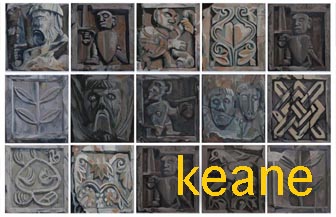 |
 |
 |
Solenne doppio dell’Immacolata Concezione 2023. I campanari di Barga insieme ai campanari della Valle del Serchio, Lucca e Monsagrati!
La tradizionale festa religiosa dell’Immacolata Concezione, celebrata ogni anno l’otto dicembre, non sarebbe completa a Barga senza il suono delle campane nel Duomo che riecheggiano sulla città per un’intera ora, il cosiddetto “Doppio dell’Immacolata”, e la scorsa notte non è stata un’eccezione. Dalle nove in punto fino allo scoccare delle dieci, le tre grandi campane sulla cima della torre del Duomo sono state messe in movimento da un team di suonatori di campane, i Campanari di Barga.
Una festa chiamata Concezione di Maria è sorta nella Chiesa Orientale nel VII secolo (prima dello Scisma del 1054) e si è diffusa in Occidente nel VIII secolo. Nel VIII secolo è diventata una festa della Chiesa Cattolica Romana. È l’unica tra le feste di Maria giunta alla Chiesa Occidentale non attraverso Roma, ma diffusasi dalla zona bizantina a Napoli e poi in Normandia durante il loro dominio nel sud Italia. Da lì si è diffusa in Inghilterra, Francia, Germania e infine a Roma.
Prima della definizione da parte del Papa Pio IX dell’Immacolata Concezione come dogma della Chiesa nel 1854, la maggior parte dei messali si riferiva ad essa come la Festa della Concezione della Beata Vergine Maria. I testi festivi di questo periodo si concentravano più sull’azione della sua concezione che sulla questione teologica della sua preservazione dal peccato originale. Un messale pubblicato in Inghilterra nel 1806 indica che la stessa colletta della festa della Natività della Beata Vergine Maria veniva utilizzata anche per questa festa.
Il primo passo verso la descrizione della concezione di Maria come “immacolata” avvenne nel XI secolo. Nel XV secolo, Papa Sisto IV, promuovendo la festa, tollerò esplicitamente coloro che la promuovevano come Immacolata Concezione e coloro che contestavano tale descrizione, posizione successivamente avallata dal Concilio di Trento.
Il proprio per la festa della Concezione della Beata Vergine Maria nel Messale Medievale di Sarum si limita a trattare dell’azione della sua concezione.
La colletta per la festa recita:
“O Dio, ascolta misericordiosamente la supplica dei tuoi servi che si sono riuniti in occasione della Concezione della Vergine Madre di Dio, affinché per sua intercessione possiamo essere liberati da te dai pericoli che ci circondano.”
Nel 1854, Pio IX emise la dichiarazione infallibile Ineffabilis Deus: “La Beata Vergine Maria, nel primo istante della sua concezione, per una grazia singolare e privilegio concesso dal Dio onnipotente, in vista dei meriti di Gesù Cristo, il salvatore della razza umana, fu preservata da ogni macchia di peccato originale.” – fonte





